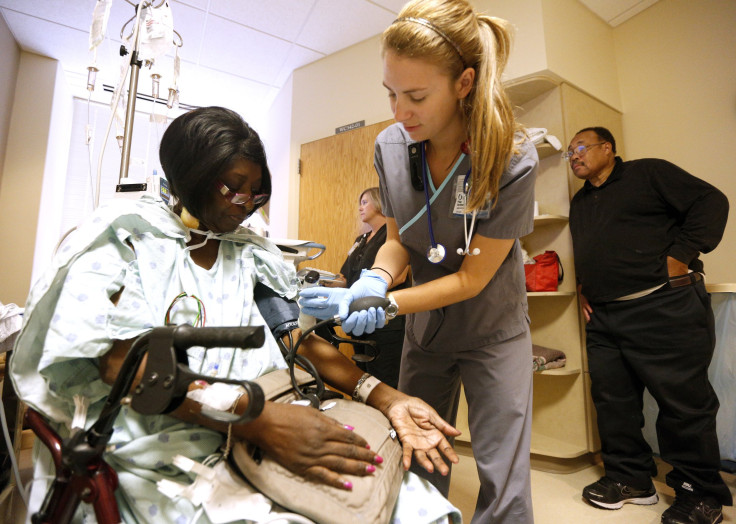Why Are So Many Rural Hospitals In The U.S. Closing Down?

KEY POINTS
- In West Virginia, almost 40% of rural hospitals are at risk of closure
- Only 1,844 rural hospitals remain in operation in the country
- More than 120 rural hospitals across the U.S. shut down over the past decade
More than 120 rural hospitals across the U.S. shut down over the past decade, while 453 more are in dangers of closure, revealed a report from the Chartis Center for Rural Health.
A total of 19 rural hospitals disappeared in 2019 alone.
The hospitals closed principally due to poor financial performance. Hospitals most at risk of closure have very low -- or even negative -- operating margins.
Only 1,844 rural hospitals remain in operation in the country.
These closures raise serious risks for rural residents who tend to be older, poorer, less healthy and more isolated than their suburban or urban counterparts.
“None of the metrics we track to measure the stability of the rural health safety net are improving, and this research allows us to quantify just how severe the implications could be if the current situation worsens,” said Michael Topchik, national leader at the Chartis Center.
The Chartis study revealed that states in the Southeast and lower Great Plains (Mississippi, Missouri, Oklahoma, Tennessee and Texas) were hardest hit by rural hospital closures – they also have the largest number of hospitals at risk of closure.
These are states that generally have not expanded Medicaid – the public insurance program that offer health coverage to low-income people – under the 2010 health care law.
Medicaid expansion has helped to prevent hospital closures but states like Texas (where half of its rural hospitals are in danger of closure) have refused the federal funding that pays for 90% for such expansion. Chartis calculated that being located in a Medicaid expansion state decreased the likelihood of a rural hospital closing by 62%.
“The fact that states hit hardest by the closure crisis also see the highest levels of vulnerability threatens to further erode the delivery of healthcare services at the local level,” said Topchik.
The Kaiser Family Foundation stated that: “Studies demonstrate that Medicaid expansion has significantly improved hospital operating margins and financial performance. A study published in January 2018 found that Medicaid expansion was associated with improved hospital financial performance and significant reductions in the probability of hospital closure, especially in rural areas and areas with higher pre-[Affordable Care Act] uninsured rates. Another analysis found that expansion’s effects on margins were strongest for small hospitals, for-profit and non-federal-government-operated hospitals, and hospitals located in non-metropolitan areas.”
Rural hospitals face other problems as well, namely workforce shortages, high drug prices and inadequate payment from government programs.
Rural communities tend to have a disproportionate number of poor, uninsured or underinsured patients.
"One of the greatest predictors of how much money a hospital makes is how wealthy the community is in which they are located," said Dr. Marty Makary, a surgical oncologist at John Hopkins Hospital in Baltimore. "Hospitals in wealthy communities have well-insured patients. Hospitals that are predominantly taking care of government-insured patients or poor patients tend to struggle."
In the state of Alabama, more than one-fourth of its rural hospitals find themselves at high risk of closure.
Seven rural hospitals in Alabama have closed since 2010, including Georgiana Medical Center in Georgiana in March 2019.
“When a rural hospital has to cut services or close, residents have to travel and overload the urban facilities,” said Danne Howard, chief policy officer for the Alabama Hospital Association. “It’s a domino effect when a rural hospital closes. It becomes an urban hospital issue. It becomes a health access issue.”
Alabama has not expanded Medicaid.
In Missouri, six rural hospitals have shut down in the past five years.
Last month, the Pinnacle Regional Hospital in Boonville, Mo., suddenly closed without warning.
Pinnacle Healthcare System, the company that owned the hospital, just filed for bankruptcy.
"What we have found is just less than 50% of rural hospitals are operating in the red," said Dave Dillon, vice president of public and media relations the Missouri Hospital Association. "And in the long run that’s truly not sustainable."
George Pink, deputy director of the NC Rural Health Research Program at the University of North Carolina, noted that rural hospitals tend to receive a higher proportion of revenue from Medicare, Medicaid and the uninsured. But it’s still not enough.
"It costs a lot of money to maintain a technologically up-to-date and a physically safe environment for hospital," Pink said. "If you haven't got the money to do that, then it’s not surprising that a hospital might have to close for those reasons."
Missouri hasn't expanded Medicaid
In West Virginia, the Fairmont Regional Medical Center in the town of Fairmont closed on Tuesday due to financial difficulties and the inability to find a buyer.
Fairmont Regional was the fourth hospital in the local area to close in recent months.
“We’re certainly concerned about the implications this could have for the residents of Marion County, as well as the hospital’s employees,” said a spokesperson for the West Virginia University Health System.
In West Virginia, almost 40% of rural hospitals are at risk of closure.
West Virginia has expanded Medicaid.
© Copyright IBTimes 2024. All rights reserved.





















